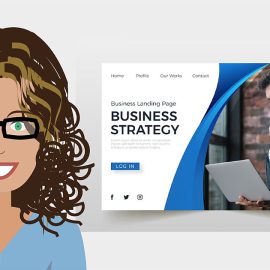
6 Practical Tips When Starting a Small Business
So, you’re ready to take the plunge into the world of small business? Exciting times ahead! Starting a small business can be a roller coaster of emotions – from the thrill of pursuing your dreams to the nerve-wracking uncertainty of it all.
Here are 6 practical tips that’ll give your small business the best shot at success.
1. How to decide on a business name
Most people know that part of starting a business is choosing a name. Be mindful though, that there’s a bit more to picking a name than simply picking something you like.
It’s okay to use clever spellings or a play on words, but make sure you don’t confuse people. Also, don’t feel obligated to choose a name that makes it clear what your company does (or sells). You can always choose a tagline or slogan that makes your products or services a little more explicitly clear.
Once you have a good solid list together, check which names have available domains. If the .com level domain is still available, there’s a very good chance the name isn’t trademarked and no one else is currently using it.
One quick note about domain names. Regardless of whether or not you plan to build a business website right away, it’s strongly recommended to grab the .com extension containing your business name, and one or both of the other top level domain extensions (.org and .net).
2. You can’t be everything to everyone
Focus on your core services and/or products, especially in the first year you’re in business. Offering too much, too fast, will make it difficult to market your strengths and build a good customer base.
Keep a running list of services or products you’d like to start offering in the future and roll them out once you’re comfortable with your core services or products.
3. The best leads are from people you already know
Many of your first clients or customers are going to be people you know. This is especially true for service-based businesses. Working for people you already know will help create “word of mouth” waves and eventually lead to referrals. It will also help build your portfolio, which makes your business more marketable to other clients. Reach out to friends, family, former co workers or colleagues and let them know what you’re up to.
When someone sends you a referral, send them a card acknowledging and thanking them. A small gift card is a nice touch too, if finances permit.
If you want to do something a little more robust, let your clients know they’ll receive a credit to their account for referrals they send your way.
Caution
Creating a robust referral program is best for companies that have been around long enough to have steady financials. So wait at least a year before you establish anything formal.
Once a formal referral program is established, it’s very difficult to take it away. You don’t want to get into a situation where you’re paying out money that you really need to hold on to in order to build up a “rainy day fund”.
4. Evaluate your prices often
This one cannot be said enough. It’s probable that you will need to make several adjustments to your prices during your first 6-12 months in business.
Figure out what your overhead expenses are for a product or service, factor in other expenses, such as holiday/sick time, software, office supplies, rent (if applicable). Don’t forget your personal expenses, such as health care, taxes and time off for sick days or holidays.
One mistake that small business owners make all the time is only considering what a product costs them to make. Customers aren’t only paying you for the service (or product) they’re getting, they’re also paying for the years of experience you have in the industry and your ability to provide the goods or services.
Caution
Be careful how you apply new price structures to returning clients. Especially when you’ve increased prices substantially. You don’t want them to get price shock. This is one of the few instances where a business should apply discounts liberally.
5. When it comes to your website, you get what you pay for
The old adage is true. Pick any two of the following: good, cheap, fast. More often than not, the only two readily available options are going to be “good and fast” or “cheap and fast”.
While it may be tempting to go fast and cheap with your website design, it’s best to invest time and money to come up with something good. With 75 per cent of people judging the credibility of a company based on the design of its website, your business website is one thing you can’t afford to skimp on.
6. Don’t discount your prices
If the majority of your business relies on referrals, your prospects will expect the same rates as the client who referred them to you. This can create a vicious cycle of discount prices.
Instead of discounting, offer added value. This one is easier to do for service-based businesses, but product-based businesses can do it too. For product-based businesses, think about perhaps offering to ship the product for free or offering a coupon for 10 per cent off on a future purchase.
SOURCE: Freelancers Union
Rimidesigns’ Business Starter Pack is designed to get you up and running as quickly as possible and is a great way to promote your business and services online. Includes: logo design, business card design and single page website.



